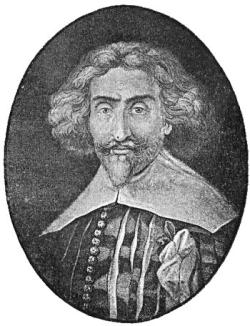Miguel de Cervantes
Miguel de Cervantes Saavedra (September 29, 1547 - April 23, , best known for his novel .
Biography

Miguel de Cervantes Saavedra was born to a family of modest means in 1547 in Alcalá de Henares, Spain. He never obtained a university education. In 1569 he left for Italy where some elegies he wrote were published. He also joined a Spanish regiment there and was wounded while fighting in the Battle of Lepanto against the Turks in 1571; as a consequence, he lost the use of left hand. From then on he was called 'el manco de Lepanto' (Lepanto's one-handed). In 1575, while returning to Spain from the Netherlands, he was captured by Barbary pirates based in Algiers. He was held captive in Algiers until he was freed in 1580 when his ransom was paid.
Upon returning to Spain he married Catalina de Salazar y Palacios in 1584 and published La Galatea a year later; he was a supplier and a tax collector for a while.
Cervantes began writing Don Quixote in 1597 while imprisoned in Seville for debt. In 1605 he published Part I of his major work, formally known as El Ingenioso Hidalgo Don Quijote de la Mancha (The Ingenious Gentleman Don Quixote of La Mancha). Part II did not appear until 1615. Between Part I and Part II of Don Quixote he published Novelas Ejemplares (The Exemplary Novels), a collection of twelve short stories. In 1615, he published Ocho Comedias y Ocho Entremeses Nuevos Nunca Representias although his most famous play today, La Numancia, stayed unedited until the 18th century.
His novel Los Trabajos de Persiles y Sigismunda was published posthumously one year after his death in 1616. Interestingly enough, he considered it to be his best work and far superior to Don Quixote.
His influence was such that in French and Spanish, the Spanish language is referred to proverbially as la langue/la lengua de Cervantes.
Conicidentally, he died on the same day as his English counterpart William Shakespeare.
Works
- Pieces on the death of the queen (1569)
- La Galatea (1585)
- La Numancia (play)
- Los tratos de Argel (play)
- Don Quixote (Part 1) (1605)
- Novelas Ejemplares (The Exemplary Novels) (1613)
- Viage del Parnaso (poem)
- Don Quixote (Part 2) (1615)
- Persiles y Sigismunda (c.1615)
